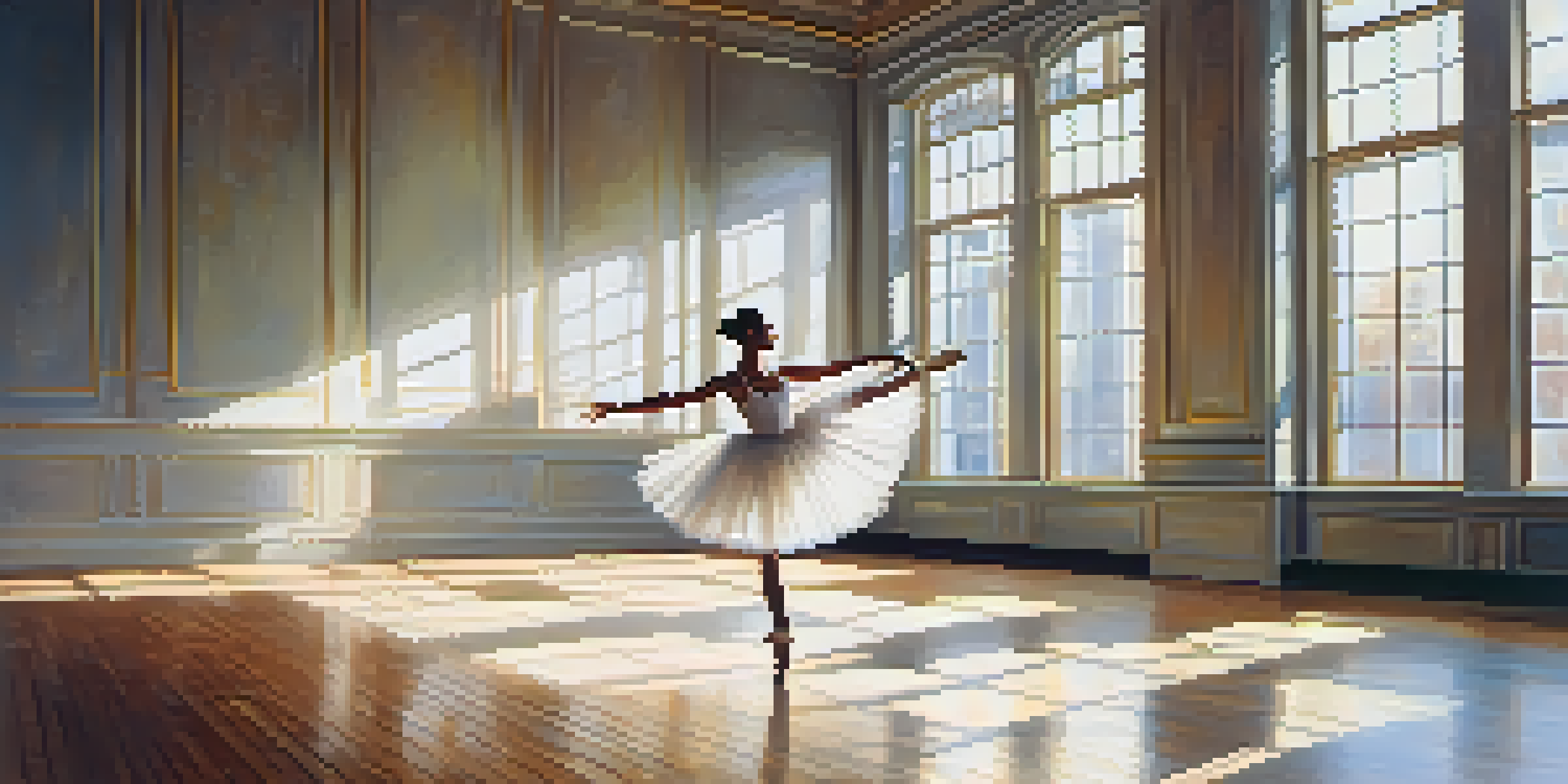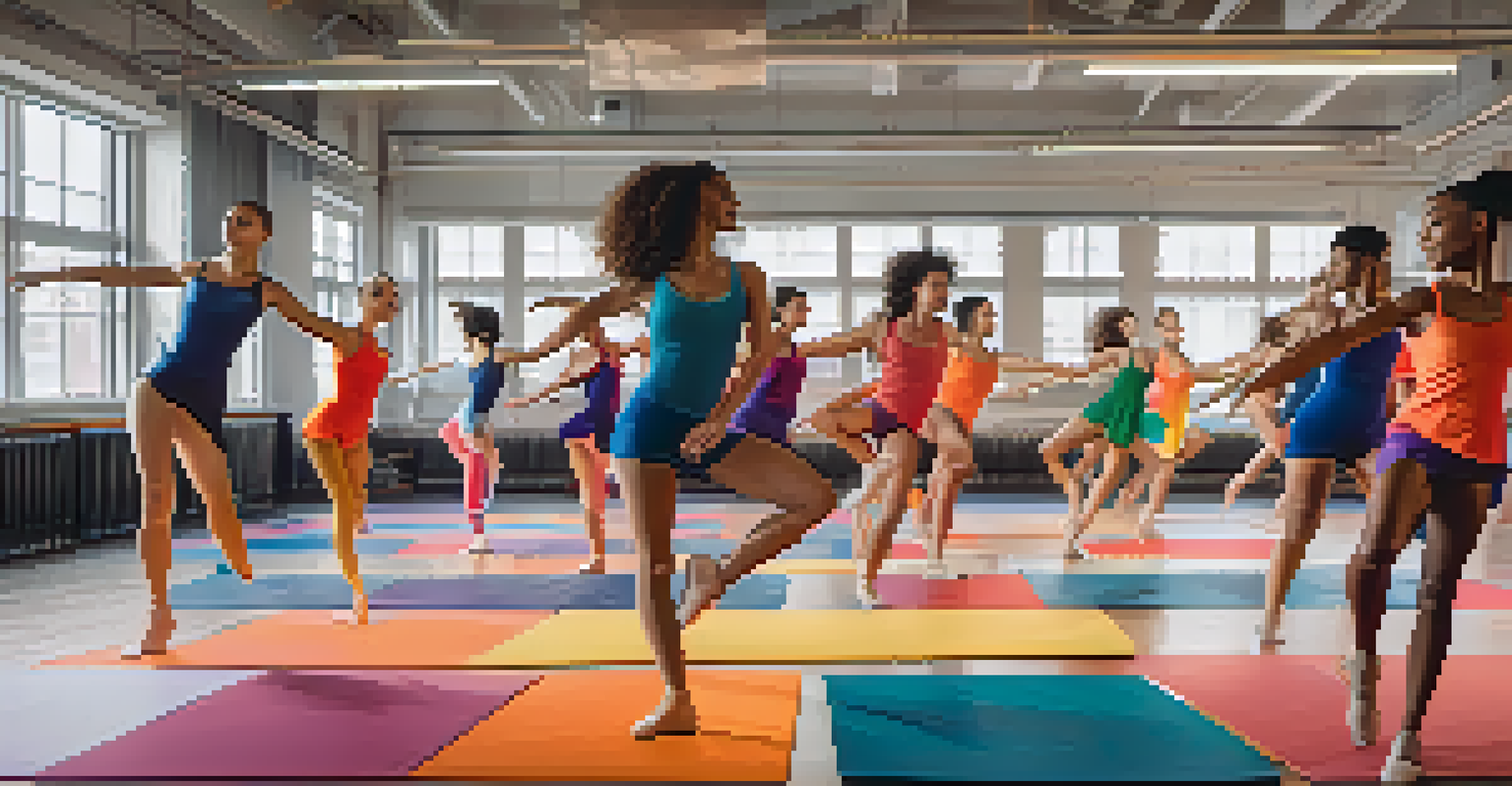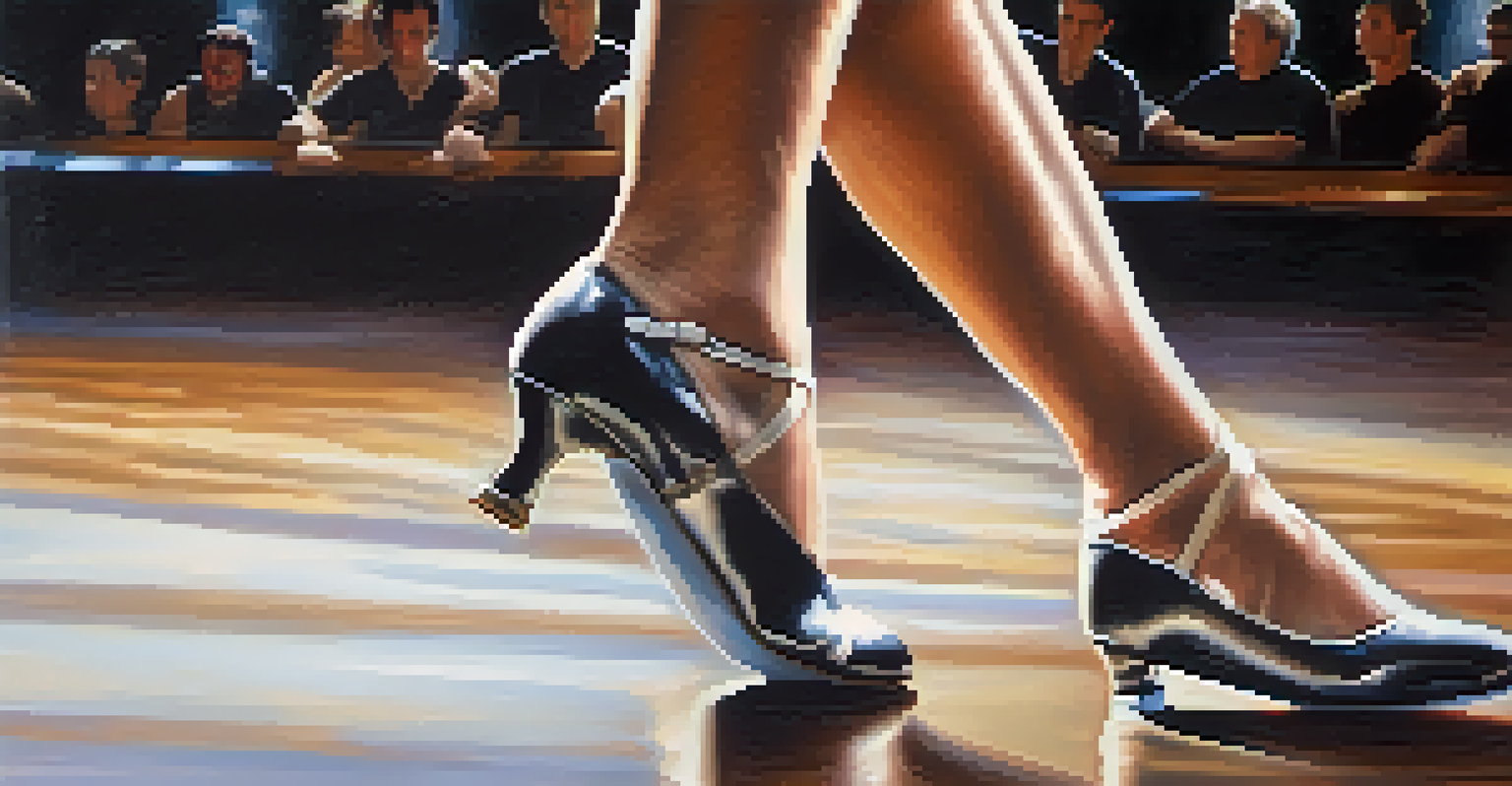Exploring Dance Movements for Enhanced Core Strength and Balance

Understanding Core Strength and Its Importance
Core strength refers to the ability of your abdominal, back, and pelvic muscles to stabilize your body. This strength is crucial not just for athletes, but for everyday activities like lifting, bending, and even walking. When your core is strong, it helps maintain proper posture and reduces the risk of injury.
Dance is the hidden language of the soul.
Think of your core as the foundation of a house. A solid foundation supports the entire structure, just as a strong core supports your body. Without it, you might find yourself wobbling during simple tasks or suffering from discomfort after physical activity.
Improving core strength can enhance your performance in various activities, including dance. By integrating dance movements into your routine, you can build a more robust core while enjoying the rhythmic expression that dance offers.
How Dance Enhances Core Stability
Dance is a unique blend of art and physical activity that naturally engages your core muscles. Many dance styles require you to engage your abdomen, back, and hips, helping to build stability. For instance, ballet dancers rely heavily on core strength to maintain balance and control during intricate movements.

When you dance, you're not just moving to the music; you're actively using your core to stabilize your body as you shift from one position to another. This engagement helps improve muscle coordination and enhances your overall balance.
Core Strength Supports Daily Life
A strong core stabilizes your body, enhances posture, and reduces injury risk during everyday activities.
Moreover, incorporating dance into your fitness routine can make working on your core feel less like a chore. The joy of movement and expression allows you to strengthen your core while having fun, creating a sustainable exercise habit.
Dance Styles That Build Core Strength
Several dance styles are particularly effective in building core strength. For example, styles like contemporary and jazz involve dynamic movements that require core engagement to maintain balance and execute turns. Hip-hop also emphasizes core control through sharp, rhythmic movements.
The body says what words cannot.
Consider ballroom dancing as well; the lead and follow dynamics require both partners to have strong cores to maintain connection and support. Each dance style offers unique benefits and can be tailored to your personal interests and fitness goals.
Exploring different dance styles not only keeps your workouts fresh but also allows you to discover which movements resonate with your body. This variety can enhance your commitment to regular practice and core strengthening.
Basic Dance Movements for Core Engagement
You don’t need to be a professional dancer to reap the benefits of dance for core strength. Simple movements like the grapevine or side shuffle can get you started. These basic steps require you to engage your core to maintain balance as you move side to side.
Another great movement is the plie, which is common in ballet. As you lower your body into a squat, your core works to keep you stable, providing both strength and flexibility. Incorporating these movements into your routine can gradually enhance your core strength.
Dance Builds Core Stability
Engaging in dance not only strengthens your core but also makes exercising enjoyable and sustainable.
It's important to remember that consistency is key. Practicing these movements regularly, even for just a few minutes a day, can lead to significant improvements in your core strength over time.
Breath Control in Dance for Core Activation
Breath control plays a vital role in both dance and core strength. Proper breathing techniques help engage your diaphragm, which, in turn, activates your core muscles. When you inhale, your core expands, and as you exhale, it contracts, creating a natural rhythm that enhances movement.
When dancing, focus on your breath to help maintain control over your movements. For example, when you perform a turn, coordinating your breath with the motion can help stabilize your core and improve your balance.
Practicing breath control not only enhances your dance performance but also encourages mindfulness, allowing you to connect deeply with your body and movements. This connection can make your dance experience more enjoyable and effective.
Incorporating Dance Into Your Fitness Routine
Integrating dance into your fitness routine is easier than you think. You can join a local dance class, follow online tutorials, or even practice in the comfort of your living room. The key is to find a rhythm that works for you and keeps you engaged.
Set aside a specific time each week dedicated to dancing. Whether it's a formal class or a casual dance party at home, make it a fun and enjoyable experience. The more you look forward to it, the more likely you are to stick with it.
Track Progress and Celebrate Wins
Monitoring your improvements and celebrating milestones enhances motivation and commitment to your dance practice.
Remember, the goal is to have fun while building your core strength. Embrace the process, let loose, and enjoy how dance can transform not just your body, but also your mindset.
Tracking Progress and Celebrating Achievements
As you embark on your journey to enhance core strength through dance, it’s important to track your progress. Keep a journal or use a fitness app to note improvements in your balance, endurance, or overall physical confidence. This reflection can motivate you to continue pushing forward.
Celebrate your achievements, big or small. Whether it's mastering a new dance move or noticing that you can hold a balance longer, recognizing these milestones can boost your confidence and commitment to your dance practice.

By monitoring your journey, you not only celebrate your successes but also identify areas for further improvement. This process can make your dance practice even more rewarding and fulfilling.